Omnichannel Publishing: The New Frontier
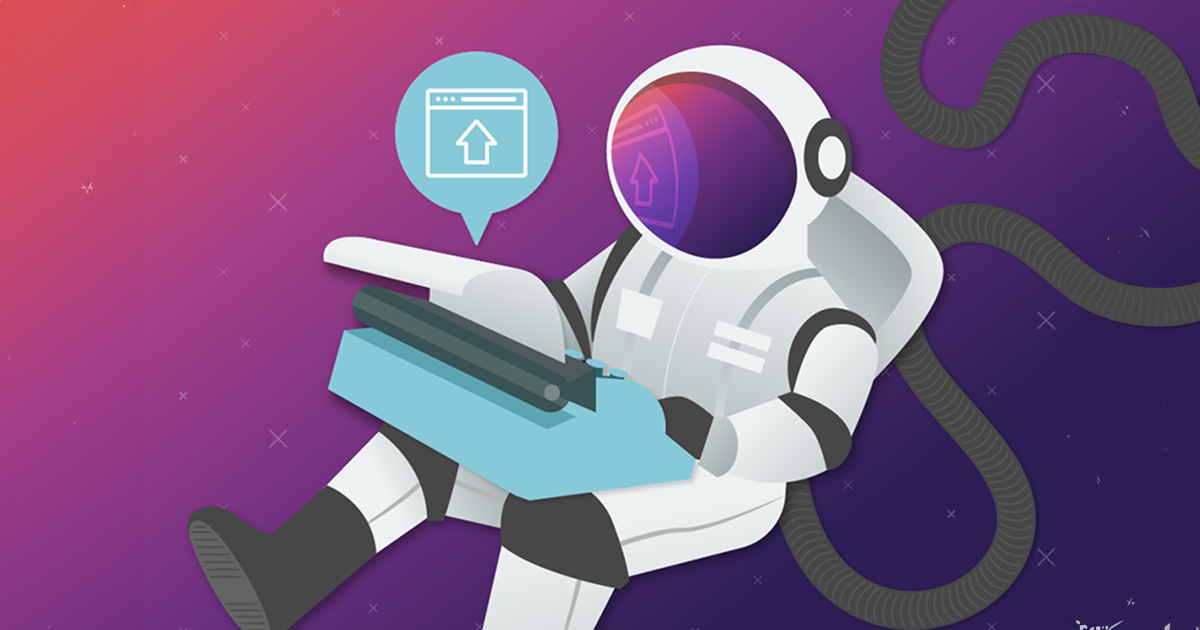
Have you ever paused a movie and then come back to find the streaming service didn’t note where you left off? Suppose you are looking at your mobile phone for a present for a friend, and you see that the item is in stock at a nearby store. You go to the store, but the item cannot be found, and the kiosk shows that it is out of stock. When digital experiences aren’t seamless, they quickly become digital inconveniences.
The more technology advances, the more consumers expect it to keep up with their daily lives. Most of us regularly use several inter-connected devices. It’s often the ease of use and personalization that takes place during these experiences that makes or breaks how we feel about a brand. That’s the value of omnichannel.
The following article introduces what omnichannel is, why it matters, and what you can do to build an omnichannel publishing strategy that works for your organization. If you are interested in more detailed information on implementing an omnichannel strategy, check out “The Omnichannel Publisher: How Media Organizations Can Navigate the Biggest Publishing Challenges of 2020.”
Omnichannel Explained
Omnichannel is an approach to sales, marketing, publishing, and other business disciplines that provides a customer experience that’s fully integrated and seamless across all channels. With omnichannel, there are no barriers or limitations based on whether a customer is consuming content from a mobile device or a desktop computer — every stage of the experience is linked.
Omnichannel builds a user experience that makes everything flow perfectly across different channels and devices.
Multichannel vs. Omnichannel: What’s the Difference?
Multichannel publishing is what most businesses invest in — a beautifully designed website, engaging social media campaigns, perhaps SMS marketing. But as responsive and engaging as those channels might be, if they’re not working together, it’s not omnichannel.
If you’re only investing in multichannel publishing, there will be a big gap in customer journeys that take place on different channels. But with omnichannel publishing, it doesn’t matter what channel or device the customer is using — every part of the experience is integrated, linked, and aligned with multiple touchpoints.
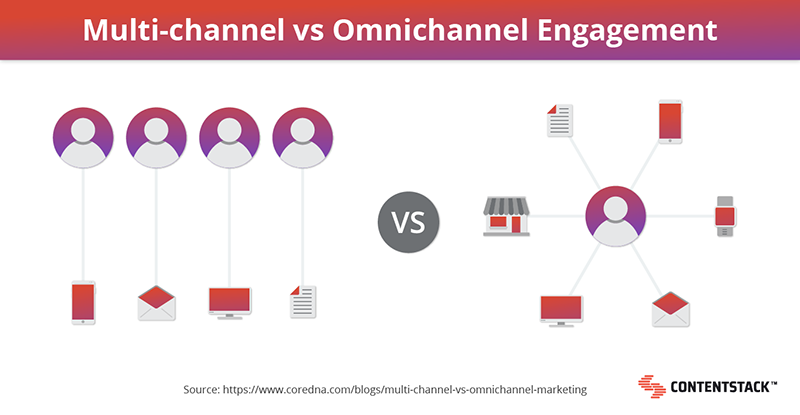
Customers Expect an Omnichannel Experience
There was a time when brand recognition meant focusing on logos, colors, and slogans. But in the explosive digital era that we live in, businesses need to integrate customer-centric narratives if they want to stand out. And customers need to be able to easily experience that narrative no matter the channel or device.
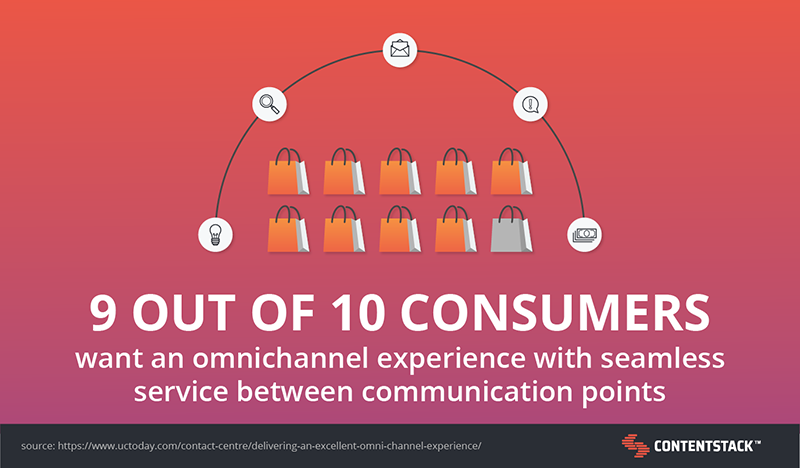
Let’s look at the world of book publishing. While studies have shown that hard copy books aren’t going anywhere — the reality is that most traditional publishers don’t concern themselves with forming relationships with readers. They make deals with authors and leave much of the customer engagement process to their distributors.
The numbers of ebooks and self-published books grow each year. Because this trend disrupts the traditional buying process, traditional publishers now realize that they must start building relationships with readers. On the flip side, Amazon has long recognized the importance of consumer-centric marketing and puts a lot of its efforts towards understanding its users. It asks questions, recommends products based on a customer’s purchasing history, notifies readers when a favorite author has released a new book, and so on.
Content might be king, but consumers are close to taking the title. Brands that don’t realize this run the risk of falling behind and becoming irrelevant.
Building an Omnichannel Strategy That Delivers on Top Trends
The first thing businesses need to do is develop a high-level omnichannel strategy for how to use customer data to integrate your content along different channels. To do that, you’ll need to understand why your customers interact with each channel, what drives them to do so, and when they’re most likely to engage with it.
You want to create a 360-degree view of users based on how they interact with each channel. Then, build on that data to weave those preferences into every step of the customer’s journey to create a seamless and fully integrated experience.
If you’re starting to build an omnichannel strategy, keep in mind that not every bit of data is useful to your business.
There are many platforms, devices, channels, and people to consider, so make sure you identify which data is essential to your business’s success. Let’s look at some of the significant trends in omnichannel and how you can build it into your strategy:
1. Create Adaptive Content
One of the best ways to kickstart a robust omnichannel strategy is to start creating adaptive content. Unlike static content for a general audience (if it serves everyone, it serves no one), adaptive content is highly targeted and supports personalized and meaningful interactions across multiple channels.
A customer might be browsing on their tablet, but want to make the purchase from their phone — the content should change seamlessly, based on the device used, the context and the user. For example, a CTA might be “click” on a laptop, “say select” from a voice-recognition tool, or “tap” on a tablet. Every part of the user experience is adapted based on how the user is engaging with the content.
2. Guide Customers Across Various Touchpoints
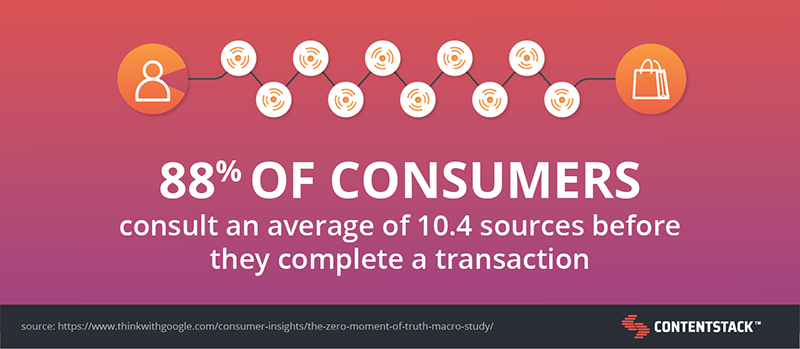
A strong omnichannel strategy predicts the customer’s needs and then provides the right content to satisfy those needs. One great example is how many retail brands have started to combine the customer’s offline and online experience. Retail brand Oasis, for instance, makes sure that all sales associates on the shop floor carry iPads. When helping customers, they can quickly check inventory or even order an item directly to a home address if it’s out of stock. The customer will then receive a notification by email or SMS to let them know their item is on its way.
With this seamless way of shopping, the brand makes everything as simple as possible for the customer, while integrating each stage using different devices and channels.
3. Personalize Messages and Ensure Your Design Is Optimized
Let’s take a look at how Goodreads connects with users. In its weekly email newsletter, users receive book suggestions based on what their friends are reading. Instead of reading something generic like “top picks,” subscribers get personalized content in which they have a genuine interest.
Adaptive content applies to the visual elements too, and 56% of consumers say they would happily purchase from a brand that provides an excellent personalized experience.
Think deeply about how your content will look across different platforms and on devices with varying screen sizes. How does it look on mobile? Social media? What about your email newsletter? Content needs to go everywhere, and it needs to adjust automatically.
4. Complete Your Omnichannel Publishing Strategy with Headless CMS
A headless content management system (CMS) works as a content hub with a central repository for all your content, and it makes it easy to integrate best-of-breed applications and microservices. This content hub gives you greater flexibility than having to rely on the built-in features of a traditional publishing platform — but it also comes with another significant benefit.
Under the hood of a headless CMS, content is created and stored separately from programming and design. Not only does that mean content folks are free to create, optimize, and publish content without help from other teams; it also means that they can integrate with various business applications (think CRM, translation services, AI tools, A/B testing applications, analytics parsing, and more) so that the same content can be easily re-optimized and re-published — indefinitely — for different audiences, devices, and channels.
Headless CMS enables publishers to optimize and personalize content on a larger scale than ever before.
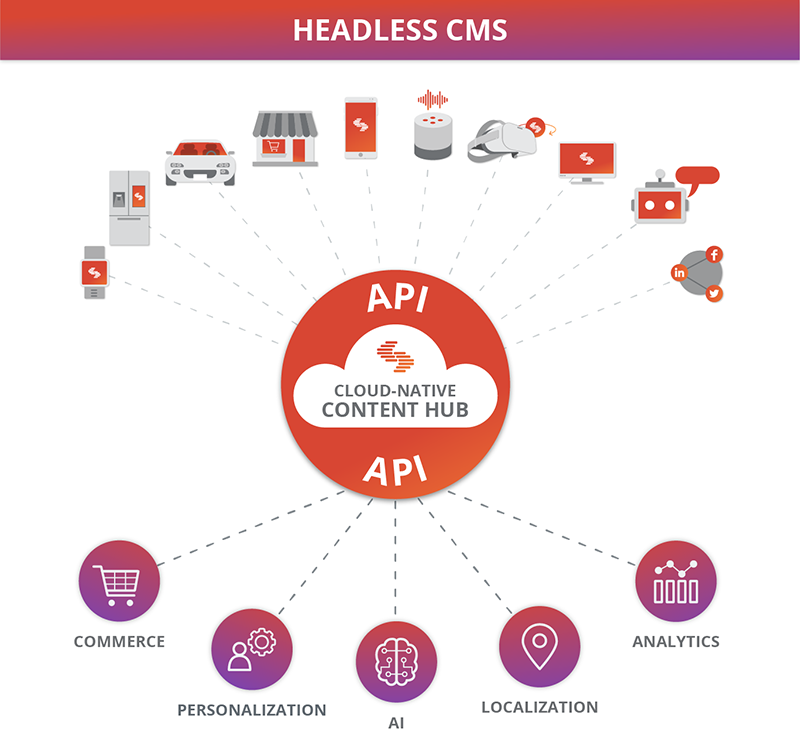
Are You Ready for the New Frontier of Omnichannel Publishing?
For modern businesses, an omnichannel strategy has become a necessity for winning customers and building a loyal audience. And while optimizing content for multiple devices and channels may seem daunting — it doesn’t need to be.
With the right headless CMS, you can build an omnichannel strategy into your business easily and painlessly. As mentioned earlier, for more in-depth information on omnichannel publishing, check out the recently published “The Omnichannel Publisher: How Media Organizations Can Navigate the Biggest Publishing Challenges of 2020” ebook. To see the power of a headless CMS, sign up for a free trial of Contentstack.
About Contentstack
The Contentstack team comprises highly skilled professionals specializing in product marketing, customer acquisition and retention, and digital marketing strategy. With extensive experience holding senior positions at renowned technology companies across Fortune 500, mid-size, and start-up sectors, our team offers impactful solutions based on diverse backgrounds and extensive industry knowledge.
Contentstack is on a mission to deliver the world’s best digital experiences through a fusion of cutting-edge content management, customer data, personalization, and AI technology. Iconic brands, such as AirFrance KLM, ASICS, Burberry, Mattel, Mitsubishi, and Walmart, depend on the platform to rise above the noise in today's crowded digital markets and gain their competitive edge.
In January 2025, Contentstack proudly secured its first-ever position as a Visionary in the 2025 Gartner® Magic Quadrant™ for Digital Experience Platforms (DXP). Further solidifying its prominent standing, Contentstack was recognized as a Leader in the Forrester Research, Inc. March 2025 report, “The Forrester Wave™: Content Management Systems (CMS), Q1 2025.” Contentstack was the only pure headless provider named as a Leader in the report, which evaluated 13 top CMS providers on 19 criteria for current offering and strategy.
Follow Contentstack on LinkedIn.







.svg?format=pjpg&auto=webp)
.svg?format=pjpg&auto=webp)
.png?format=pjpg&auto=webp)






.png?format=pjpg&auto=webp)


